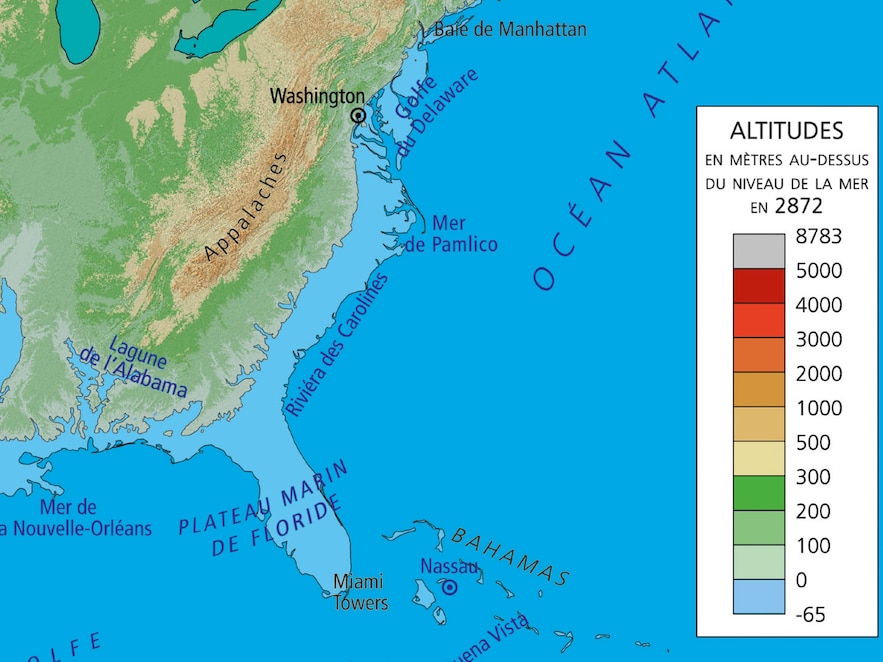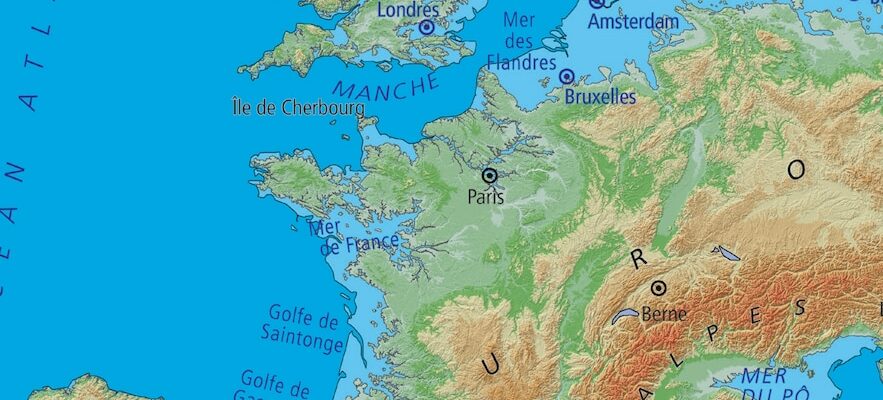Simulating a distant future to warn about the effects of climate change. IPCC scientists have already done this by presenting no fewer than five scenarios for 2100. In their work The world of the Anthropocene (Ed HumenSciences) which appears this Wednesday, September 25, Telmo Pievani Mauro, professor of philosophy of biological sciences at the University of Padua and Mauro Varotto, professor of geography at the University of Padua, take the exercise even further, by developing the worst-case scenario – the one in which humanity does nothing to stop the climate crisis – until the end of the 29th century.
So here we are in 2872. By this time, the oceans have risen 65 meters and 92% of biodiversity has disappeared. Ocean currents are so altered and intensified that sailing off the Cape – the starting point of the book – has become suicide, unless you do it on a container ship the size of an island.
“We chose to start the book’s subject a thousand years after the publication of the Around the world in eighty days by Jules Verne. The whole story ironically follows the story of an explorer, adapting it to a distant future of which we are the archaeological past,” says Telmo Pievani.
New Europe, in the event of a 65-metre rise in water levels.
© / Francesco Ferrarese
Trends taken to the extreme
In this imaginary future, flat-earthers still exist, as does fake news. They are even considered real information from the moment they collect enough votes on social networks. Hunting parties now target genetically modified game… This crazy dystopia is of course a pretext to launch a call to action. “Even if the trends pushed to the extreme here are already underway today, we can still change the course of events,” continues the author. On condition, of course, that we change our habits and take better account of climate change.
To give more force to the story, the book contains maps of all the continents. Maps that no longer really resemble those we know, so much has the water level risen. Total melting of the Arctic and almost complete melting of the Antarctic… Compared to the current situation, the world has “lost” about 23 million km2, or more than 15% of the land. On this planet bluer than ever, Florida has completely disappeared, the islands of the Indonesian archipelago have undergone a severe slimming cure. In China, water has penetrated from the East, erasing Shanghai. It has dug its way to Wuhan, which now gives its name to an inland sea.

In 2872, Florida disappears under water.
© / Francesco Ferrarese
Brittany becomes an island
Europe is not spared. Ireland has become a paradise for the wealthy thanks to the residual Atlantic precipitation and the after-effects of the Little Ice Age that followed the slowdown of the Gulf Stream in 2350. Further south, London has its feet in the water. The British capital has even been forced to move some of its architectural gems to Oxford and Cambridge. Belgium and the Netherlands have been wiped off the map, covered by the new Sea of Flanders and that of Moulins. With the disappearance of Rotterdam, Brussels has become the great port of the North Sea. Amsterdam and Hamburg, floating cities. The Danes, who have lost 89% of their territory, have fled en masse to Greenland…
And France? Our country is also affected since it is losing a good part of its Atlantic coastline. The Cotentin peninsula, Vendée, Landes and even the north of Guyana find themselves drowned under the waves. Protected by the Armorican Massif, Brittany resists, again and again. But it is becoming an island. A sort of climatic refuge in an overheating country. Enough to rekindle the identity flame of the Bretons of the future.
.
